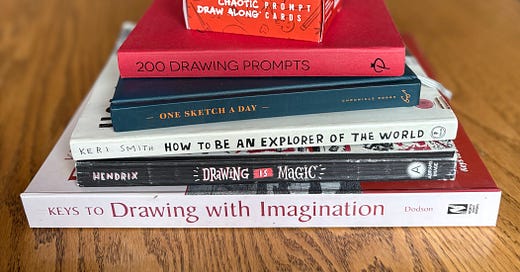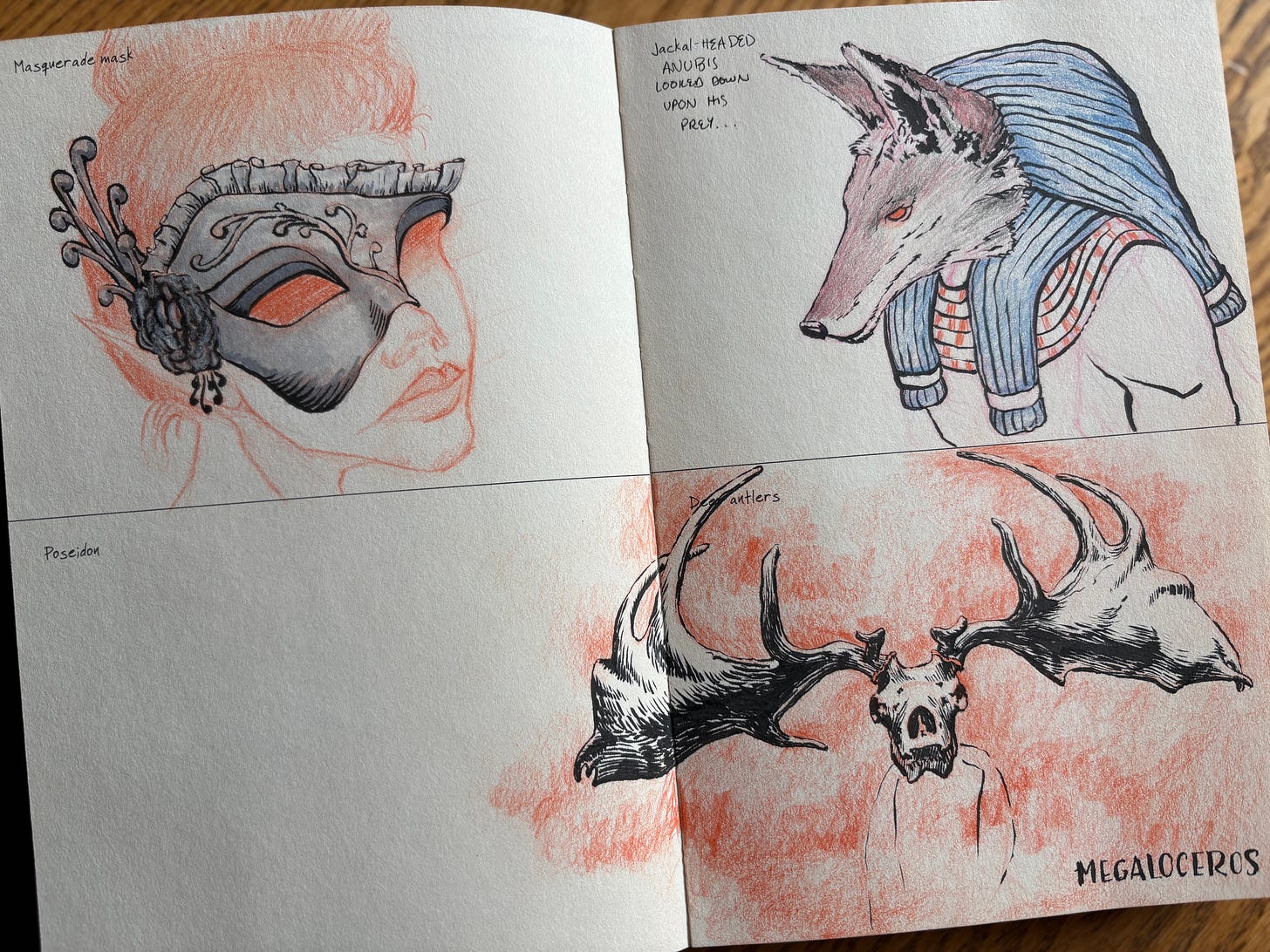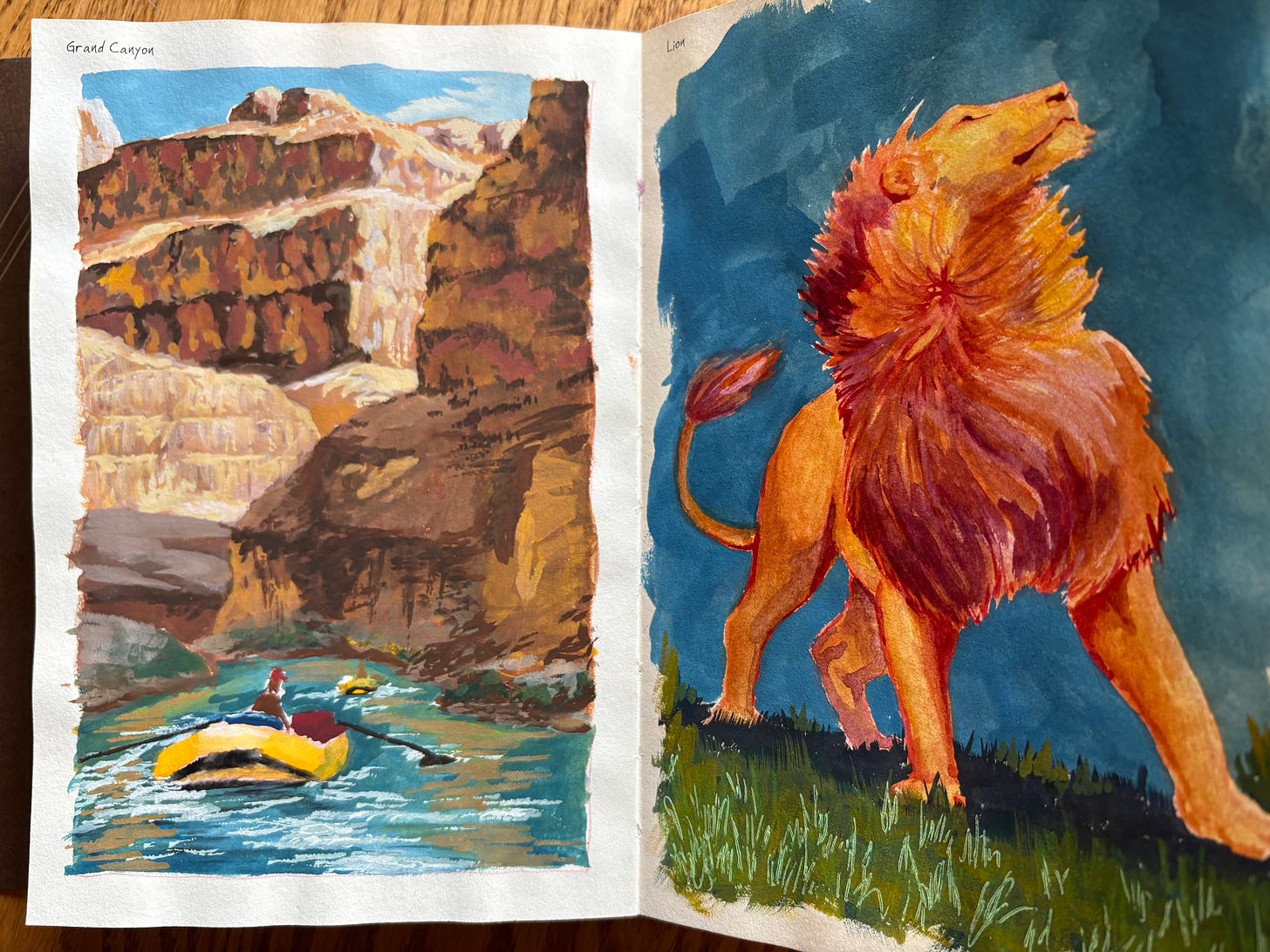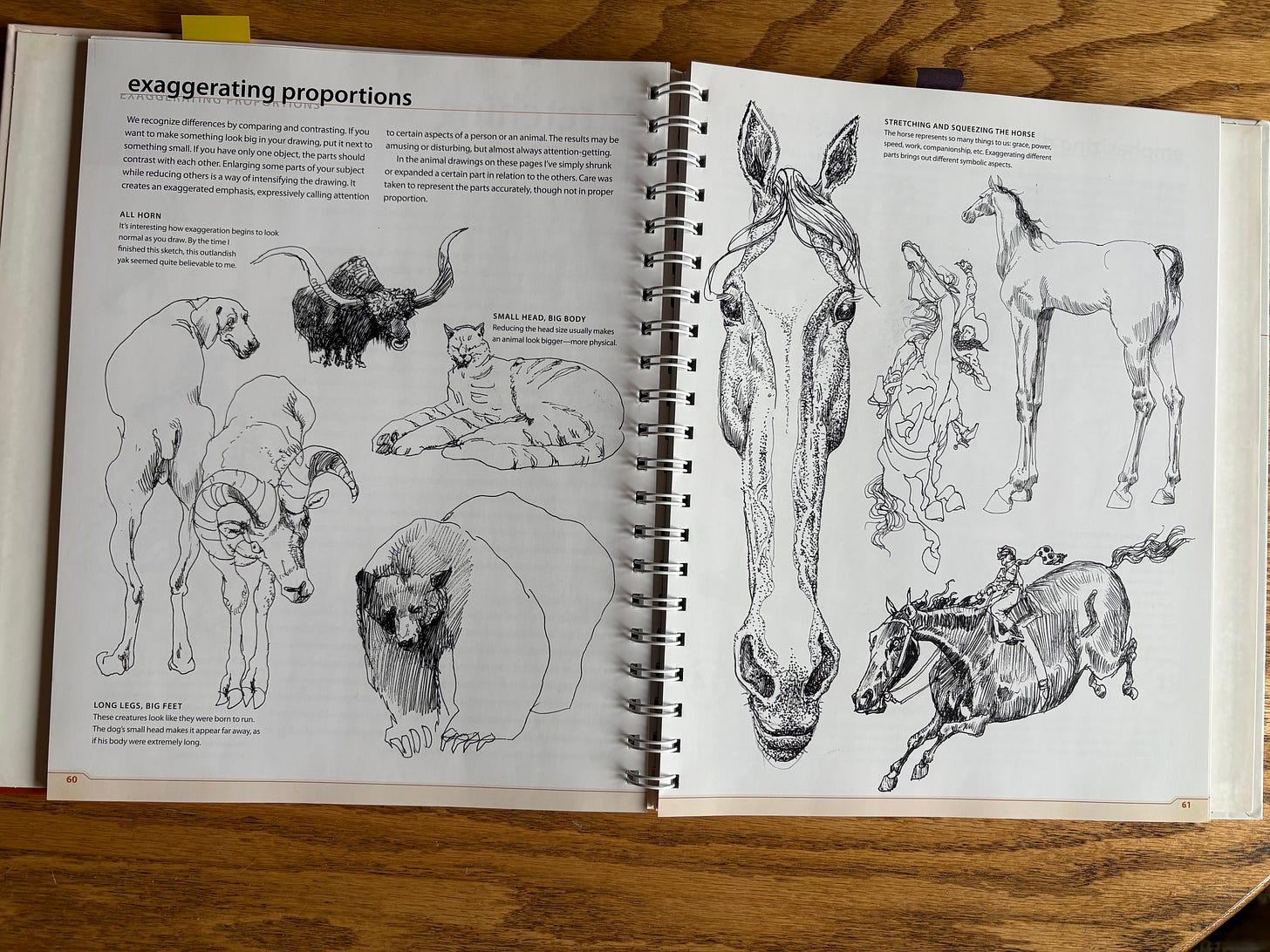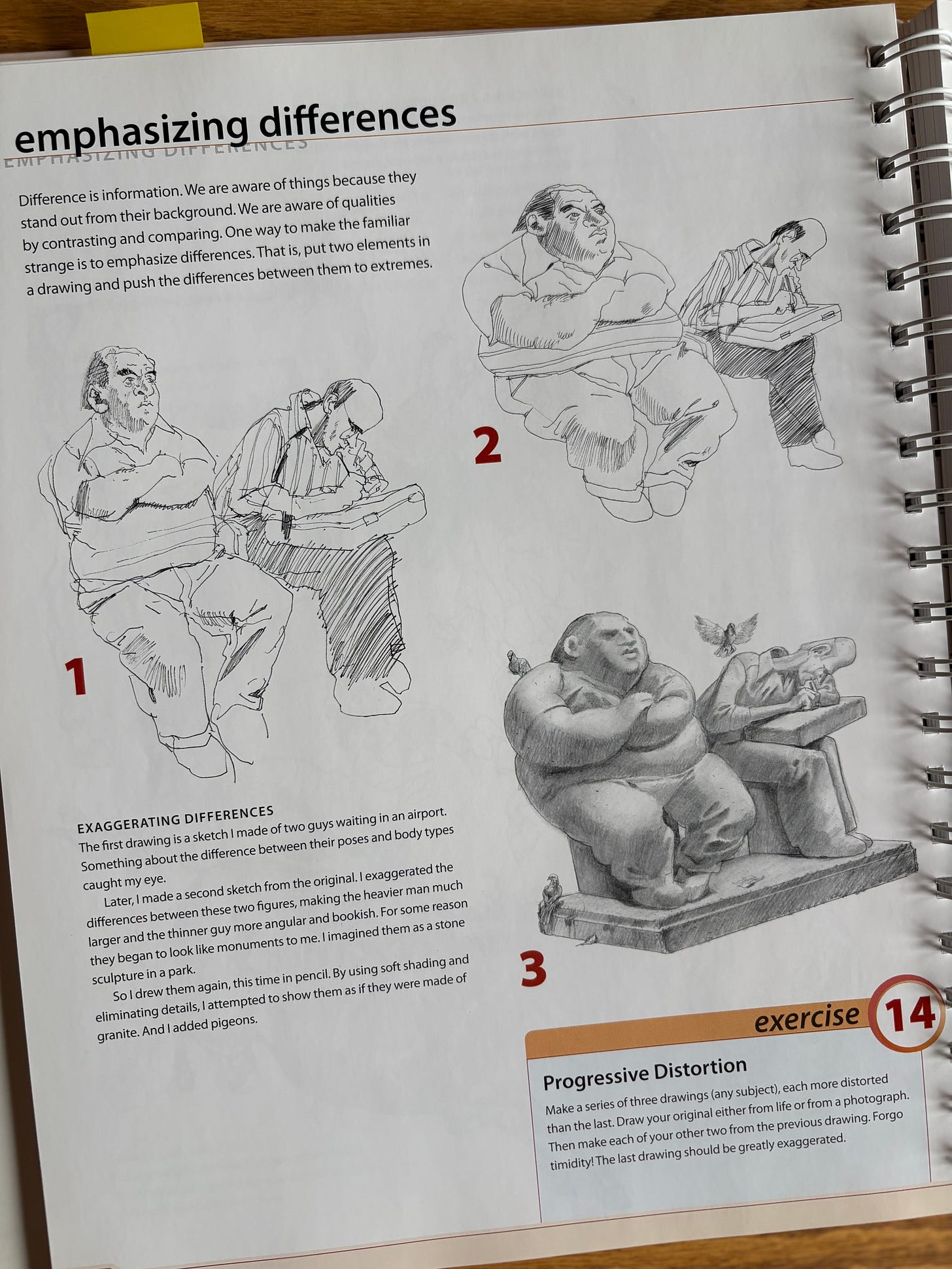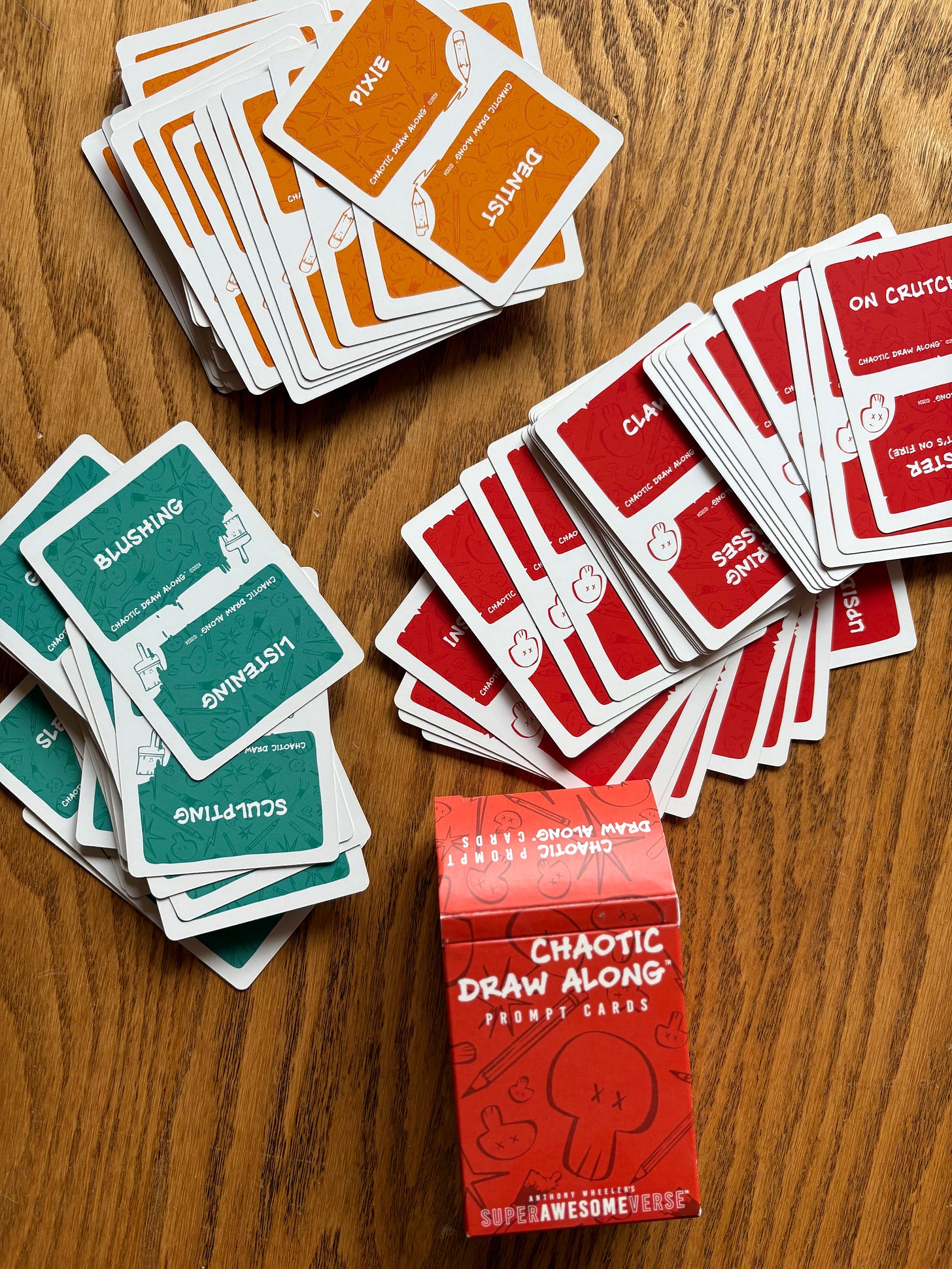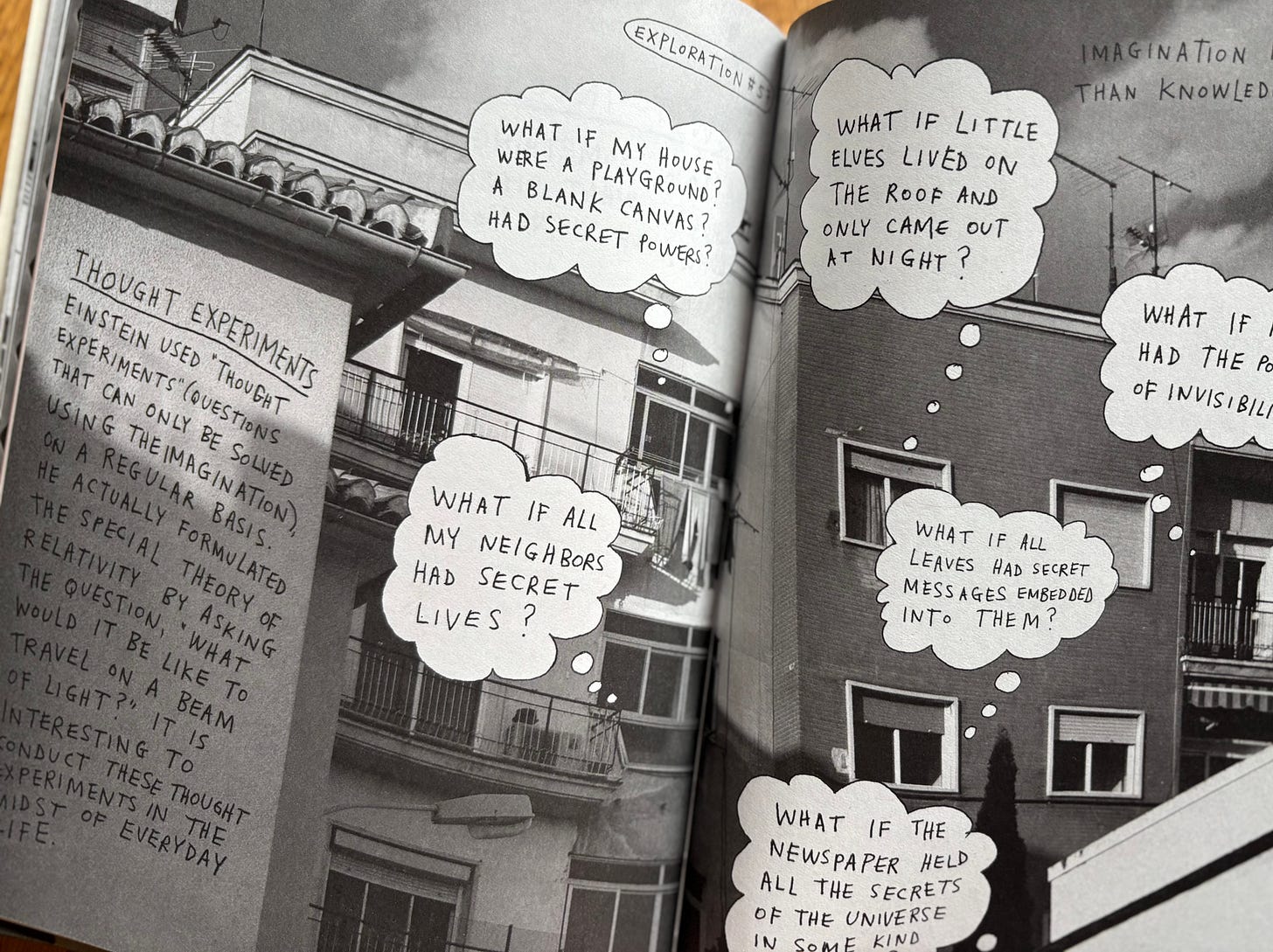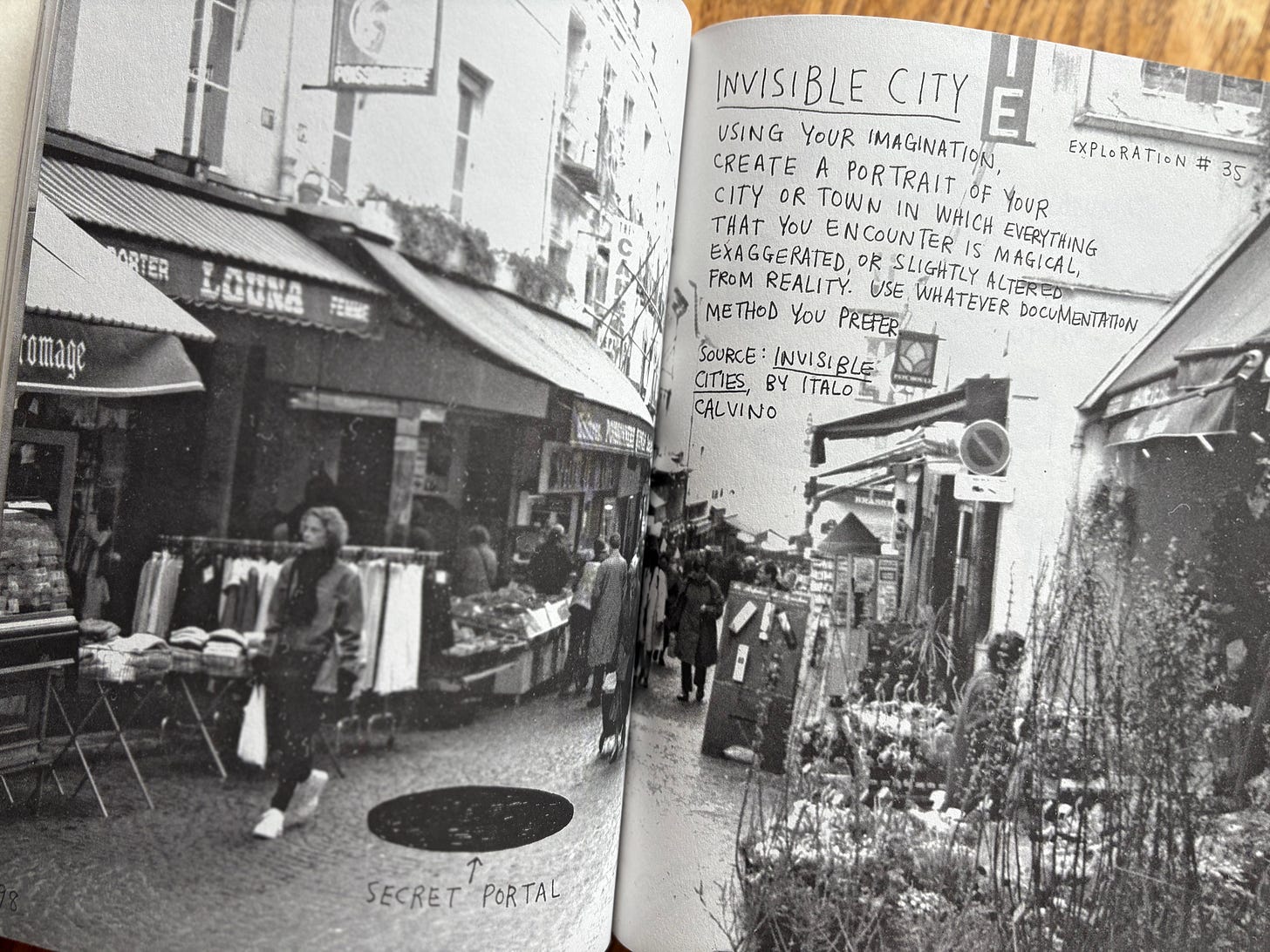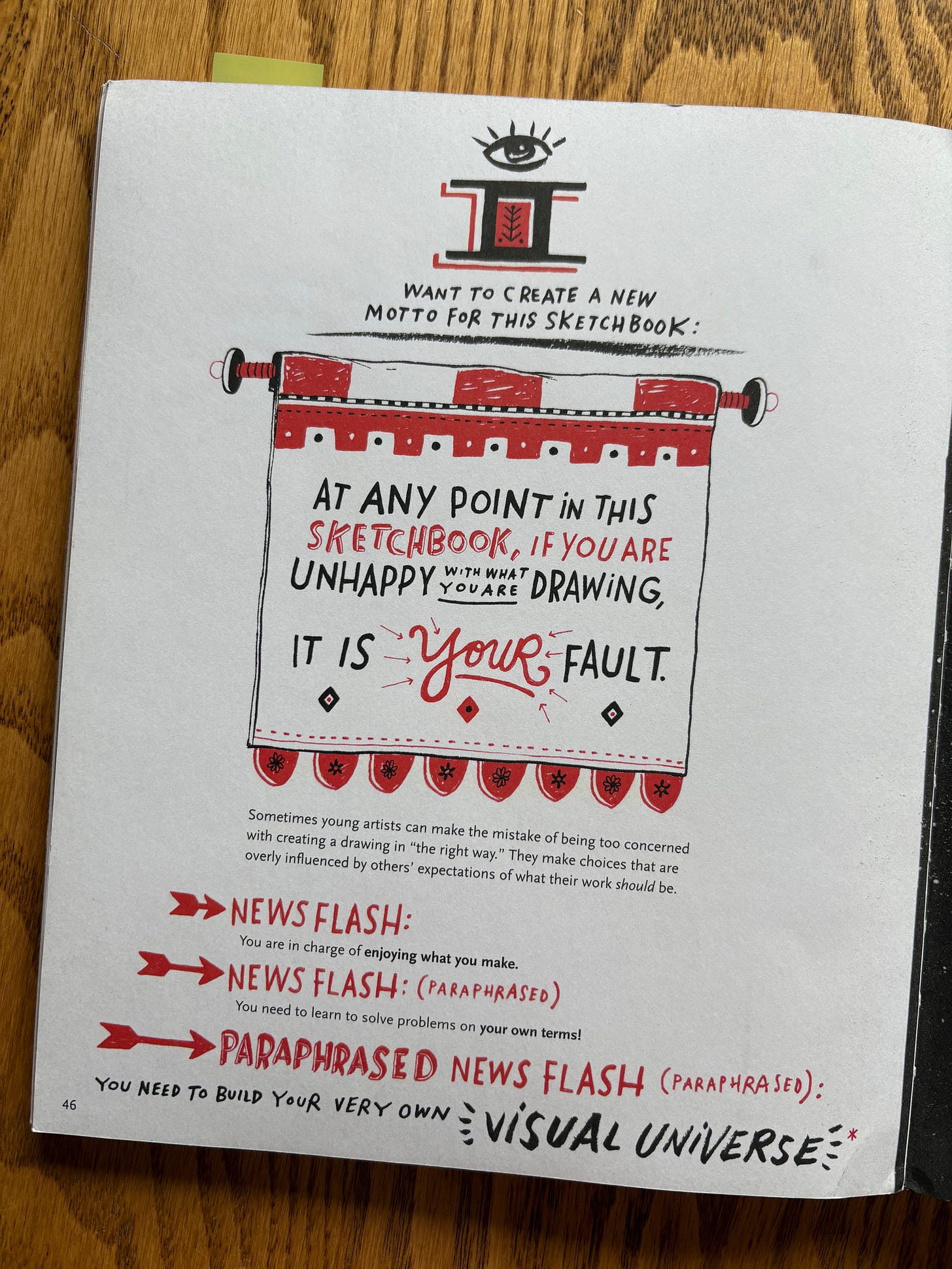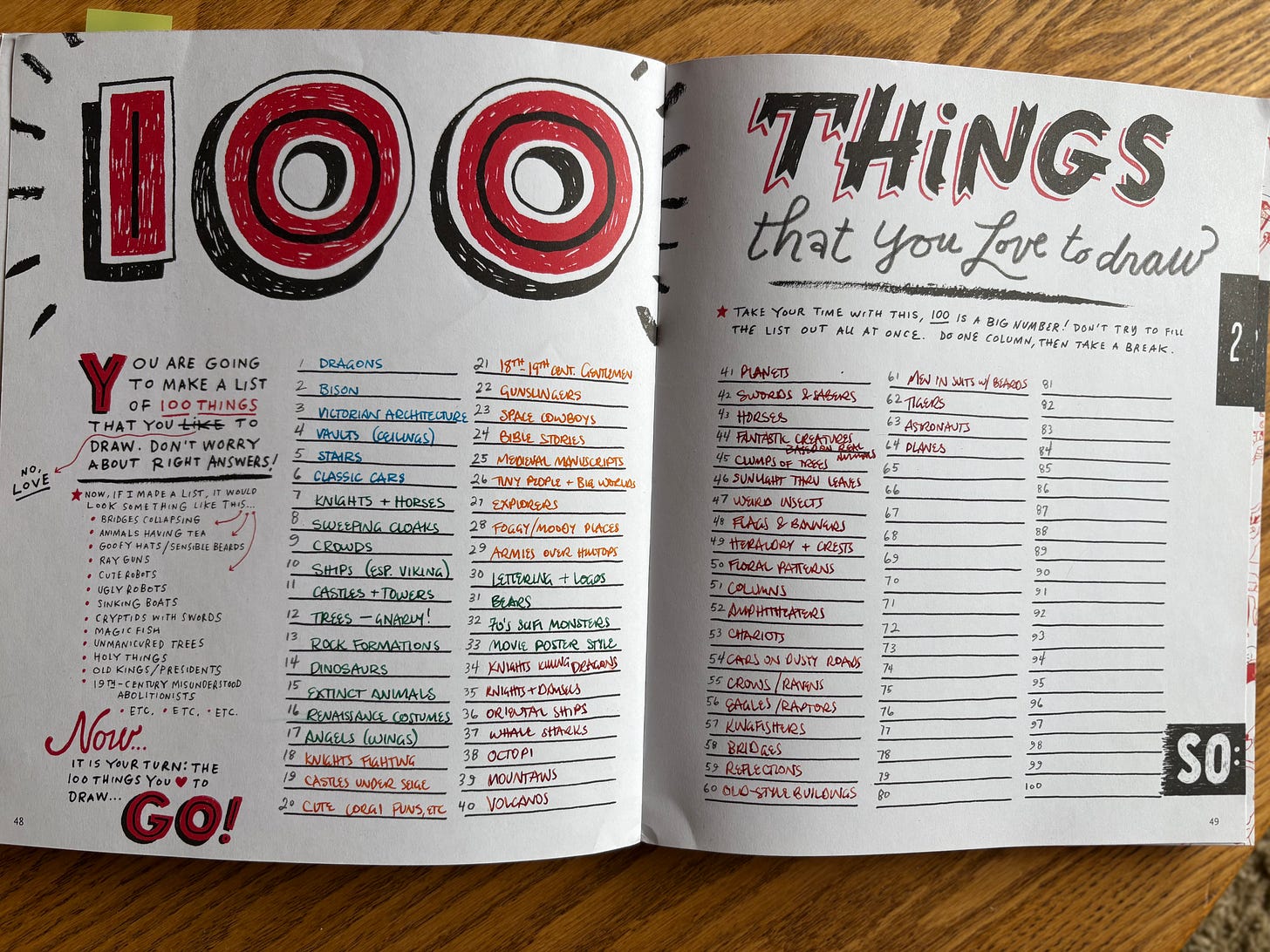Drawing creatively and with imagination is a skill, and like a muscle it needs to be stretched and strengthened. Foundational exercises to quickly boost your creativity include drawing things outside your comfort zone, connecting or combining two subjects, and looking at things in new ways. These five resources will help you get started.
1. Drawing Prompts
The great thing about drawing prompts is that they answer the ever present what question: What do I draw?
But, they don’t tell you how to draw—which is where the creativity comes in.
In a pinch, you can find prompt lists and even prompt generators online. However, I do think a tangible book that you actually fill out is much more motivating to keep going.
For example, Picadilly put out a prompt book called 300 Drawing Prompts, found in any Walmart, which is one that I’ve enjoyed using. (Since I got mine, they updated it to a little red book, 200 Drawing Prompts, which has only one prompt per page.) But this is just one of many prompt books—any you can find will do.
TIP: Sometimes I like to buy my prompt books and guided sketchbooks like this used, and not just for the discount. Usually the previous owner will have done just a few pages, but since the book is already started, or even (to various degrees) “ruined” it makes it much easier for me to start. I don’t have to worry about “messing it up.”
The difficult thing about these books is that very often they are filled with things you do not want to draw. But this is a feature, not a bug: By drawing things outside your interest and/or comfort zone, you’ll increase your creative range. It will also challenge you to find the most creative and interesting ways in which to draw these so-called “boring” or “difficult” things. (Another reason why a tangible book is better than a prompt generator—it’s too easy to skip and pick a different prompt if it’s not in a book.)
These are set up in a way that works well for a daily drawing challenge. If you’re up for it, try doing a prompt a day until you fill the book.
However, you don’t have to make it a drawing habit challenge—since it is challenge enough just to draw all these different things, adding in more challenges can be stifling. Know what you’re up for, and challenge yourself accordingly!
I usually just keep a prompt book on hand, and whenever I don’t know what to draw, or I’m not really “feeling” anything in particular, I pull it out and give one of the prompts a go.
2. Keys to Drawing With Imagination
This book, by Bert Dodson, is a treasure trove of imaginative drawing exercises. It is a great resource for learning how to draw even quite ordinary things in new, inventive ways.
These are a couple of my favorites:
While its exercises can be done as prompts in themselves, they are also great in combination with prompt books and other assignments, and can quickly make even the dullest art assignment more creative.
3. Chaotic Draw Along Prompt Deck
Denver artist and illustrator Anthony Wheeler recently released the Chaotic Draw Along deck of cards, full of drawing prompts. These are a step up from the simple “here’s what to draw” prompt book—the cards are designed to jump start the creative engine by forcing a variety of unlikely combinations.
The deck comes with three color-coded types of cards: Subject, Descriptor, and Chaos. You can use the Subject cards in the same way as a prompt book (as above), or combine it with a descriptor for a more challenging and creative drawing exercise. Adding in a third prompt from the Chaos set can make it even more fun.
The deck is also a great game to play with others (including “non-artists”). Involving other people in your creative process is a semi-secret jet fuel to really launch your creativity into the stratosphere.
4. How to Be an Explorer of the World
This book, by Keri Smith, is not specifically for drawing. However, I’ve found that many of the exercises are really great for getting myself out of a rut, and finding new and unusual ways of looking at the world.
My favorites include:
I love this idea she lifted from Einstein: Thought Experiments—“questions that can only be solved using the imagination.” Sometimes I think we forget that the imagination IS a valid scientific and “serious” tool for exploration.
When you approach every exercise in this book as a drawing exercise, it automatically puts you into a creative problem-solving mode—because they’re not designed to be drawing exercises. So, how do you turn it into one?
5. Drawing is Magic
This book, by John Hendrix, is the best step-by-step walkthrough I’ve ever found on how to develop your unique creative vision. Not for nothing is it subtitled, “Discovering Yourself in a Sketchbook!”
It begins with a chapter walking through drawing assignments, designed to teach you how to see—as an artist sees. These are common enough exercises in art classes, but I enjoyed John Hendrix’s spin on them—getting the imagination involved straight away.
Then, it progresses through the development of what amounts to your own, unique visual language. It starts with drawing what you like to draw.
Which of these is your favorite? Have you tried any of them yet? Which one makes you most excited to draw? Let us know in the comments—and be sure to share any other creative drawing resources you enjoy!

